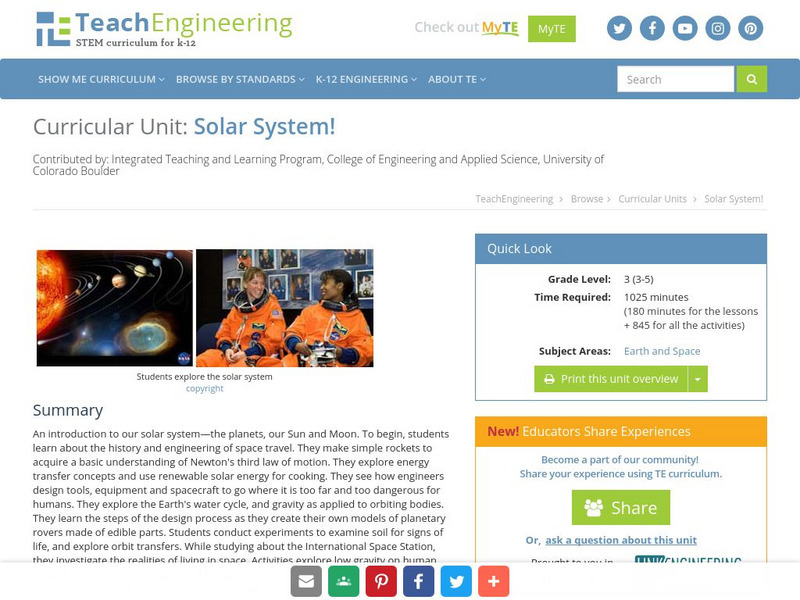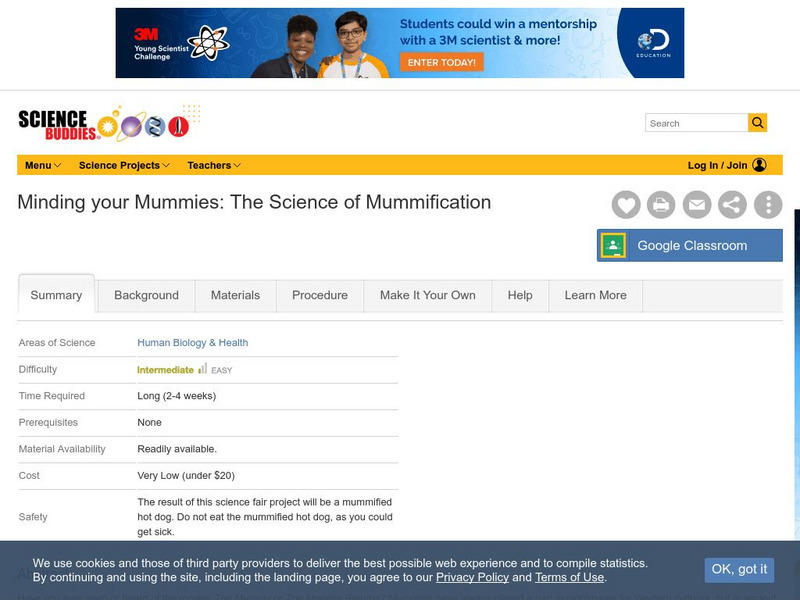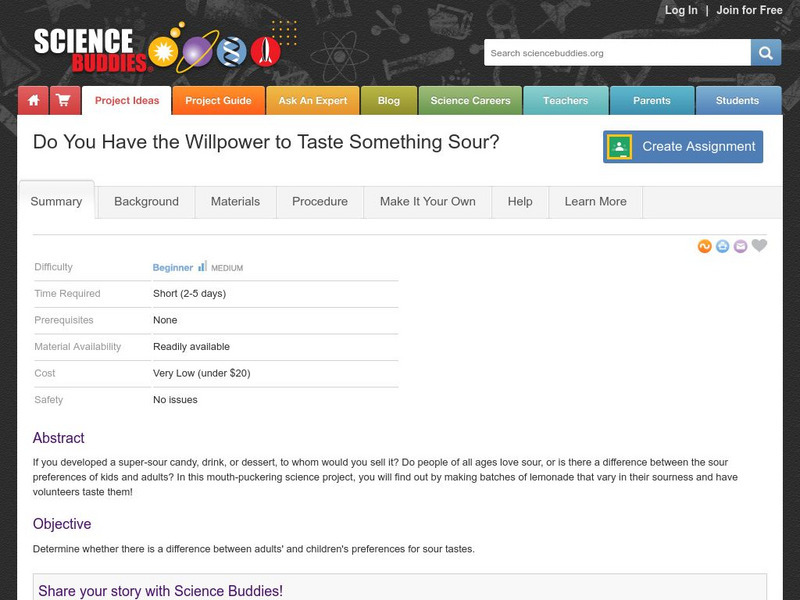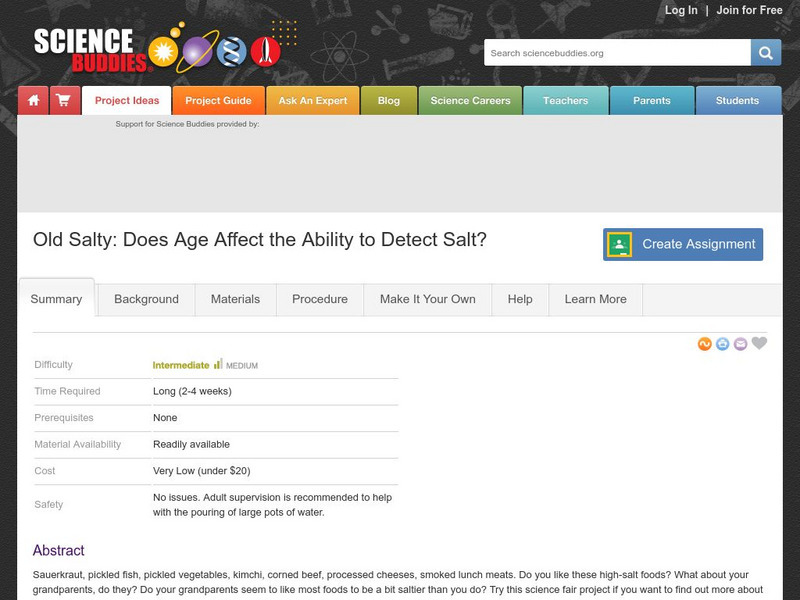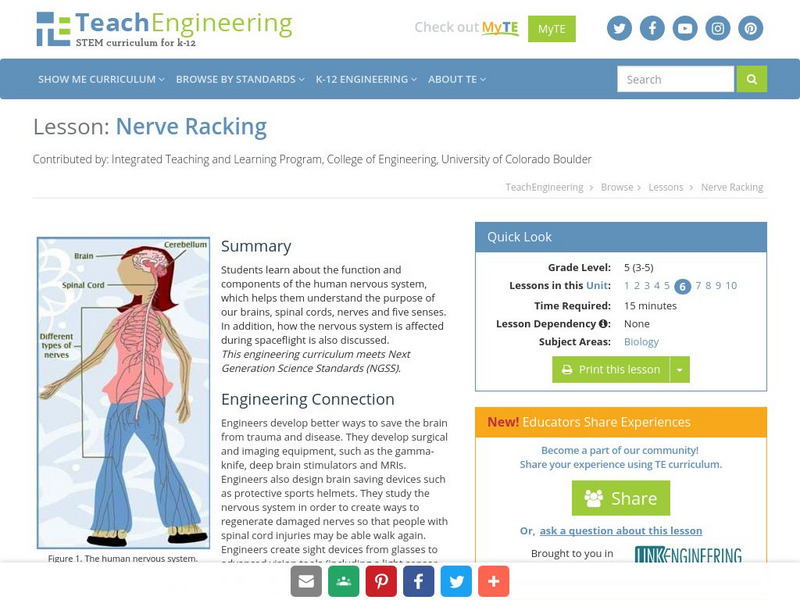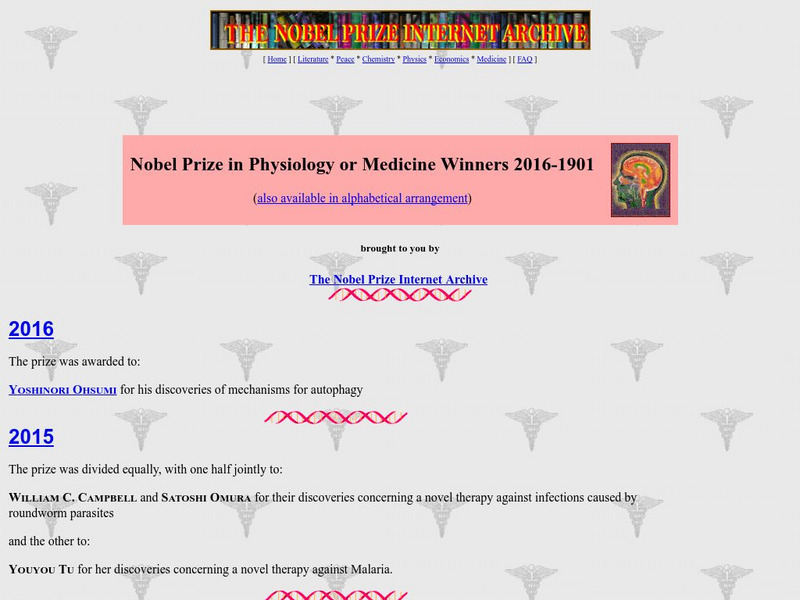Library of Congress
Loc: Everyday Mysteries: What Is the Strongest Muscle?
There are a variety of ways one can look at what might be the strongest muscle in the body. This site defines the various types of muscles and goes on to explain which would be considered the strongest.
Other
Respiratory System: How Lungs Work
How do the body's lungs work? Get a brief overview of how our lungs do their job. The explanations are accompanied by diagrams.
TeachEngineering
Teach Engineering: Solar System!
An introduction to our solar system: the planets, our Sun and our Moon. Students begin by learning the history and engineering of space travel. They make simple rockets to acquire a basic understanding Newton's third law of motion. They...
Science Buddies
Science Buddies: Minding Your Mummies: The Science of Mummification
Mummies have always played a part in nightmares for Western cultures, but in ancient Egypt, mummification was a serious religious ritual. They believed that preserving human remains was necessary so that the previous owner could enjoy...
Science Buddies
Science Buddies: Do You Have the Willpower to Taste Something Sour?
Do try this mouth-puckering science fair project to find out if people of all ages love sour tastes, or if there a difference between the sour preferences of kids and adults. You might be able to sell creations of your own based on your...
Science Buddies
Science Buddies: Old Salty: Does Age Affect the Ability to Detect Salt?
Sauerkraut, pickled fish, pickled vegetables, kimchi, corned beef, processed cheeses, smoked lunch meats. Do you like these high-salt foods? What about your grandparents, do they? Do your grandparents seem to like most foods to be a bit...
Science Buddies
Science Buddies: Project Ideas: Don't Get Burned: Uv Index Throughout the Day
Sun tanning has a bad rap right now. Use a personal ultraviolet monitor to measure the UV index to prevent getting a sunburn. With this science fair project you will create a chart showing the UV ray measurement at different times of the...
Other
Healthline: Three Dimensional Body Map: Respiratory System
Rotatable view of the respiratory system lets you examine the lungs, larynx, and trachea in 360 degrees.
Alabama Learning Exchange
Alex: Bone Up!
In this lesson students will learn the basics about the skeletal system. They will be able to identify the major bones of the human body and explain the functions of the skeletal system. The students will have the opportunity to navigate...
E-learning for Kids
E Learning for Kids: Science: Diving School: How Do We Move?
Mariven lives in Barbados. He is going on a diving adventure to learn all about bones and muscles of the human body.
University of Texas at Austin
E Fossils: Juvenile Modern Homo Sapiens [Pdf]
This life-sized printout will help students learn about the human skeleton and identify some of the important bones of the human body.
Soft Schools
Soft Schools: Skin Cross Section Game
An interactive labeling exercise helps students practice naming parts of the largest organ in the human body, the skin.
TeachEngineering
Teach Engineering: Nerve Racking
This lesson describes the function and components of the human nervous system. It helps students understand the purpose of our brain, spinal cord, nerves and the five senses. How the nervous system is affected during spaceflight is also...
TeachEngineering
Teach Engineering: Fascinating Friction!
In this activity, students use wood, wax paper and oil to investigate the importance of lubrication between materials and to understand the concept of friction. Using wax paper and oil placed between pieces of wood, the function of...
CK-12 Foundation
Ck 12: Life Science: 11.25 Blood Pressure
Take a look at blood pressure in the human body.
American Cancer Society
American Cancer Society: Colorectal Cancer
After reading about the functions and jobs of a healthy colon and rectum, read about what happens when these parts of the human body become afflicted with cancer.
CK-12 Foundation
Ck 12: Life Science: 11.41 Nerve Impulse
Understand the structure and function of a nerve cell, and how messages are transmitted throughout the human body.
CK-12 Foundation
Ck 12: Barriers to Pathogens
[Free Registration/Login may be required to access all resource tools.] In the following tutorial you will learn about the barriers that keep most pathogens out of the human body.
Other
Vitamin C Content of Fruit
This article talks about the vitamin C content in fruits. Learn how ripening and storage affect vitamin C, what the recommended daily allowance (RDA) for vitamin C is, and how vitamin C affects the human body.
Other
Nobel Prize in Physiology or Medicine Winners 2008 1901
A list of the Nobel Prize winners in Physiology or Medicine (updated yearly). Click on the names for more information.
TeachEngineering
Teach Engineering: Are We Like Robots?
Students explore the similarities between how humans move and walk and how robots move, so they come to see the human body as a system from an engineering point-of-view. Movement results from decision making (deciding to walk and move)...
Massachusetts Institute of Technology
Mit: Open Course Ware: Courses: Biology: Introductory Biology
College-level introductory biology course focusing on the application of the fundamental principles of human biology. Course topics include genetics, cell biology, molecular biology, disease (infectious agents, inherited diseases and...
TeachEngineering
Teach Engineering: Forced to Fracture
Young scholars learn how forces affect the human skeletal system through fractures, and why certain bones are more likely to break than others depending on their design and use in the body. They learn how engineers and doctors...
Gateway Community College
James Crimando: Major Superficial Muscles: Posterior Trunk and Arm
Learn the anatomy of the posterior trunk and arm.


